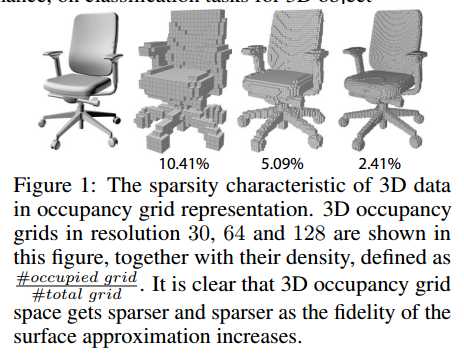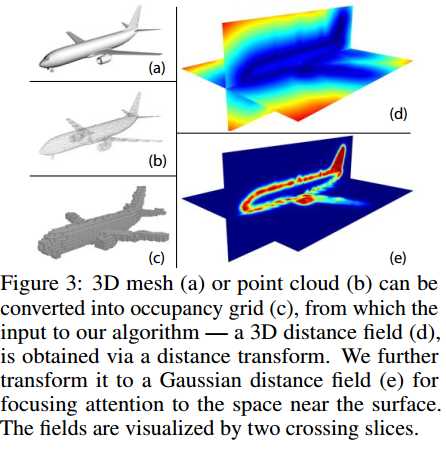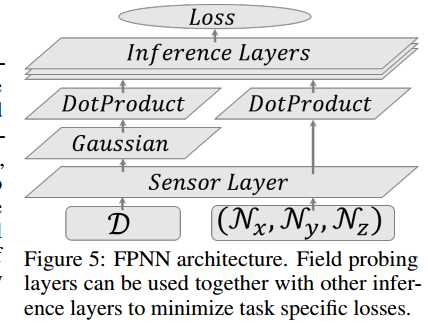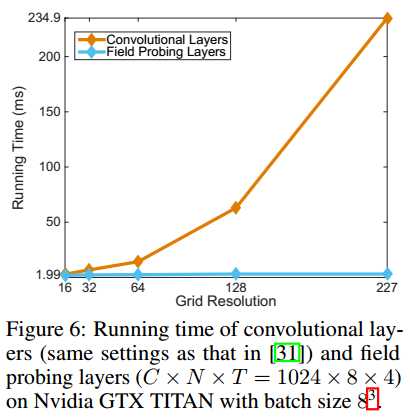标签:图像 distance bsp nts 计时 ace 多少 表达 .com
FPNN: Field Probing Neural Networks for 3D Data。
宗旨:本文旨在通过cnn学习3D的形状表达,网络设计时考虑的两个因素分别是:1. 特征应该具有很好的判别性。2. 特征提取的时效性。
2D 3D图像的差别:1.3D图像随着像素分别率的提高,surface的网格占用变得越来越稀疏。见图1. 2. 随着像素分辨率的增长,局部3D模块的判别性降低。
图1.
结论:为了获得判别性的特征,应该考虑长距离的连接,长距离的连接需要大的3Dfilters, 但是这将带来很大的计算开支。 为了处理这个问题,本文将3D 数据表示成3D fileds,并且提出一种fileds probing 机制,通过probing filters对输入进行采样,probing filters 由probing points构成。probing points决定了filter的形状和位置。
Compution of filed probing scheme: 由probing filter 的数量以及每个filter有多少probing points决定,不随分辨率的改变而变化的比较快。
Field Probing Neural Networks
1. input3D fileds
网络的输入为输入形状的3D向量场,输出为类别标签。3D形状被表示为网格或者点云,,网络或者点云能够被转换成3D distance fileds。
输入的转换见图2.
2. Filed probing layers(由三层构成,分别是: sensor layer, dotproduct layer and faussian layer)
2.1 sensor layer (在前像传播时候收集信息,在反向传播时更新probing points 的位置)
2.2 dotproduct layer (sensor layer的输出与probing filter权重的点乘)
2.3 gaussian layer (将distance field 转换成更加友好以及计算量小的表示)
2.4 architecture见图3

results
速度:

网络深度

与其他方法的对比

标签:图像 distance bsp nts 计时 ace 多少 表达 .com
原文地址:https://www.cnblogs.com/ahuzcl/p/10641306.html